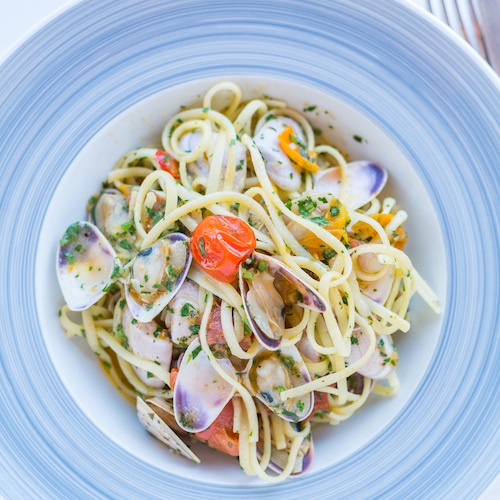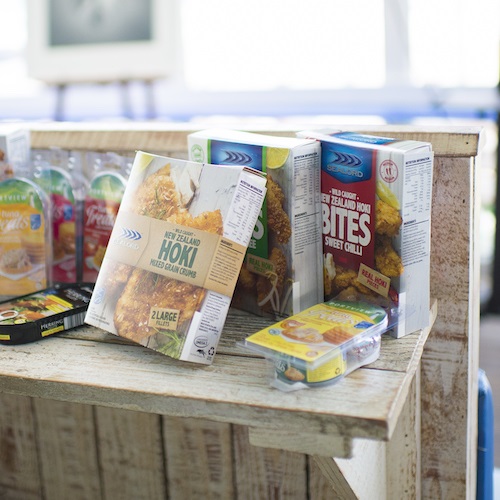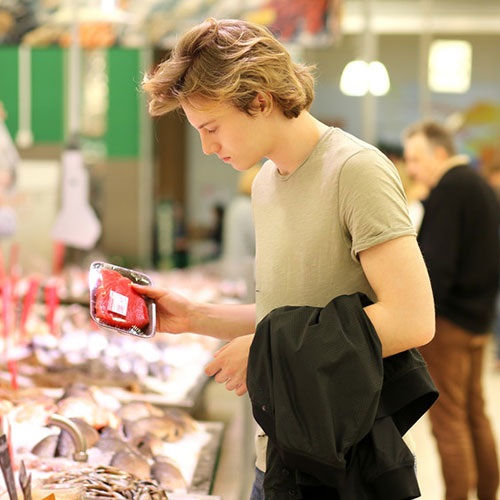Find out more about mullet, a ray-finned fish with meaty and oily flesh. Find out which mullet is sustainable and where to buy sustainable mullet.
What is mullet?
A mullet is a type of ray-finned fish, meaning their fins are webs of skin supported by bony spines.
Sea mullet, also known as flathead grey mullet, are the largest mullet found in Australia and live in estuaries and inshore waters. A versatile fish, the flesh is meaty and oily, substantial even. It is excellent smoked, baked, in a casserole, poached, or steamed. The roe of mullet is considered a delicacy.
Mullet facts
- Mullet has been part of human diets for thousands of years – they were an important source of food for the ancient Romans. These fish are still popular and widely consumed.
- Mullet are also known as ‘jumping’ or ‘happy mullet’ because they often jump and vigorously skip across the surface of water.
Is mullet sustainable?
There is no such thing as a sustainable species of fish. Only sustainable populations of fish.
The Western Australia Peel Harvey Estuary sea mullet fishery is certified to the Marine Stewardship Council’s global standard for a well-managed and sustainable fishery.
Where can I buy sustainable mullet?

You’ll find sea mullet with the blue fish tick available locally in Mandurah, Western Australia, from retailers including Wattsies Place.
Find out more about where to buy sustainable seafood.
Learn more about mullet fishing
This fishery on the Peel Harvey Estaury, South of Perth, Western Australia comprises eleven commercial vessels licensed to catch sea mullet, using gill and haul nets. Haul nets are used to encircle a school of fish, while gill nets are static.
This fishery targets two species – the blue swimmer crab and the sea mullet. What makes it unique is that the certification assessment goes beyond commercial concerns and takes in the popular recreational fishery for swimmer crabs.
Ten licensed operators make up the commercial crab fishery, with each entitled to 42 traps. These are collapsible, with a solid metal base ring for support and structure, and a buoyant pneumatic upper ring to set the trap. The traps typically have one, two or three pairs of opposing side entry funnels. The size of the gear is limited to an internal volume not exceeding 0.31m3, or a cylindrical diameter of less than a metre.
Recreational fishers catch swimming crabs with drop nets from boats in deeper water, or by wading with scoop nets in the estuary shallows. Drop nets are limited to a diameter of 1.5m, while scoop net diameter must be no more than 370mm.
Both groups are subject to size limits (minimum 127mm carapace, well above sexual maturity at 86-97mm), area closures, seasonal and weekend closures; and recreational fishers must be licensed if using a boat.
Eleven commercial vessels are licensed to catch sea mullet, using gill and haul nets. Haul nets are used to encircle a school of fish, while gill nets are static. Mesh size constraints are in force for each type of net, and length is also limited. Like the swimming crab fishery, the mullet fishery is subject to size limits, area closures and seasonal restrictions.
Explore sustainable fish to eat
Find more sustainable seafood species that are MSC certified in Australia and New Zealand.
Explore the sustainable seafood guide.


Sustainable seafood recipes
Chefs and seafood lovers from around the world share quick and tasty ways of cooking MSC certified seafood.

10 reasons to choose the blue fish tick
Choose seafood which helps to protect oceans, livelihoods and fish for the future.

Buy sustainable seafood
Where to find the blue fish tick at supermarkets, fish shops and restaurants.
